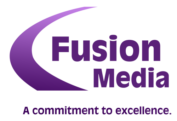
Even veteran PR pros have to brush up on their fundamentals from time to time. Here are some ways to grow your media relations skillset and start earning more coverage.
Any personal trainer or athlete will tell you that in order to get in shape and stay in shape, a good stretching plan is critical.
It helps prevent injury, ensures maximum performance, and it should be followed on exercise days and off days to ensure that you remain limber.
The same idea is true in PR.
To remain at the top of your game, it’s important to be flexible enough to identify and adjust to every PR opportunity that presents itself.
Here are four ways that we’ve come up with to “stretch” your own PR muscles:
1. Study your media.
We say “your media” because in all cases, you’re not targeting the larger media universe, just the journalists who are most likely to cover your niche.
Even if you work in an agency with a diverse and constantly evolving client base, there’s a chance that you can narrow your targeted media down, depending on your industry or specialty.
The best place to start is to focus primarily on the media you are most likely to pitch. Read and watch their reports for the kinds of interviews they conduct, the kinds of questions they ask, their common approach.
Learn why and how they do what they do simply through focused observation on a daily basis. Make it part of your routine.
2. Meet with members of the media.
Choose a group of reporters that you can meet with from time to time.
Have coffee or lunch and build a relationship with each reporter. But keep in mind, this is not all about pitching that reporter over coffee, and most certainly it’s not about approaching these meetings with a specific article placement in mind. In cases where the journalist is not local, arrange for a phone call to get to know them better.
It’s all about learning and listening. The primary benefits from personal meetings with journalists is to become more knowledgeable in how they think and work, what challenges they face, and what they need from you. A steady plan of face-to-face meetings with journalists will make you a better all-around communications professional, and most certainly will strengthen all of your pitches, including the ones with journalists you’ve never met.
3. Engage on social media.
Though you might not be able to meet all of your targeted media face-to-face, you can follow and engage with them on social media no matter where they are located.
Create lists on Twitter and follow your targeted journalists. Follow them on Facebook, LinkedIn and Instagram as appropriate. When they post something worth a relevant comment or a question, do it. Don’t be shy about posing specific questions or comments to journalists without any prompting on their part.
If you make this a part of your PR plan, they’re more likely to remember you when you do have a story idea.
4. Write a blog.
This should be more than a series of essays on how you see the world, or a how-to blog. More to the point, write a blog that is journalistic in style, and commit to a schedule.
The reason that it should be journalistic in style is that this approach will force you to put yourself in the shoes of the media you target. The very process of writing your own blog will better enable you to understand why and how journalists operate the way they do, because you’ve had to do it, too.
So, as you write your blog, it’s important to interview people, cite sources for your information, and “report” on the topic at hand.
If you make sure you post at least once a week, it won’t be long before you notice some significant improvements in your PR work and results.
If you want a marketing partner that is passionate about helping you grow your business then get in touch. It’s what we’re best at.






